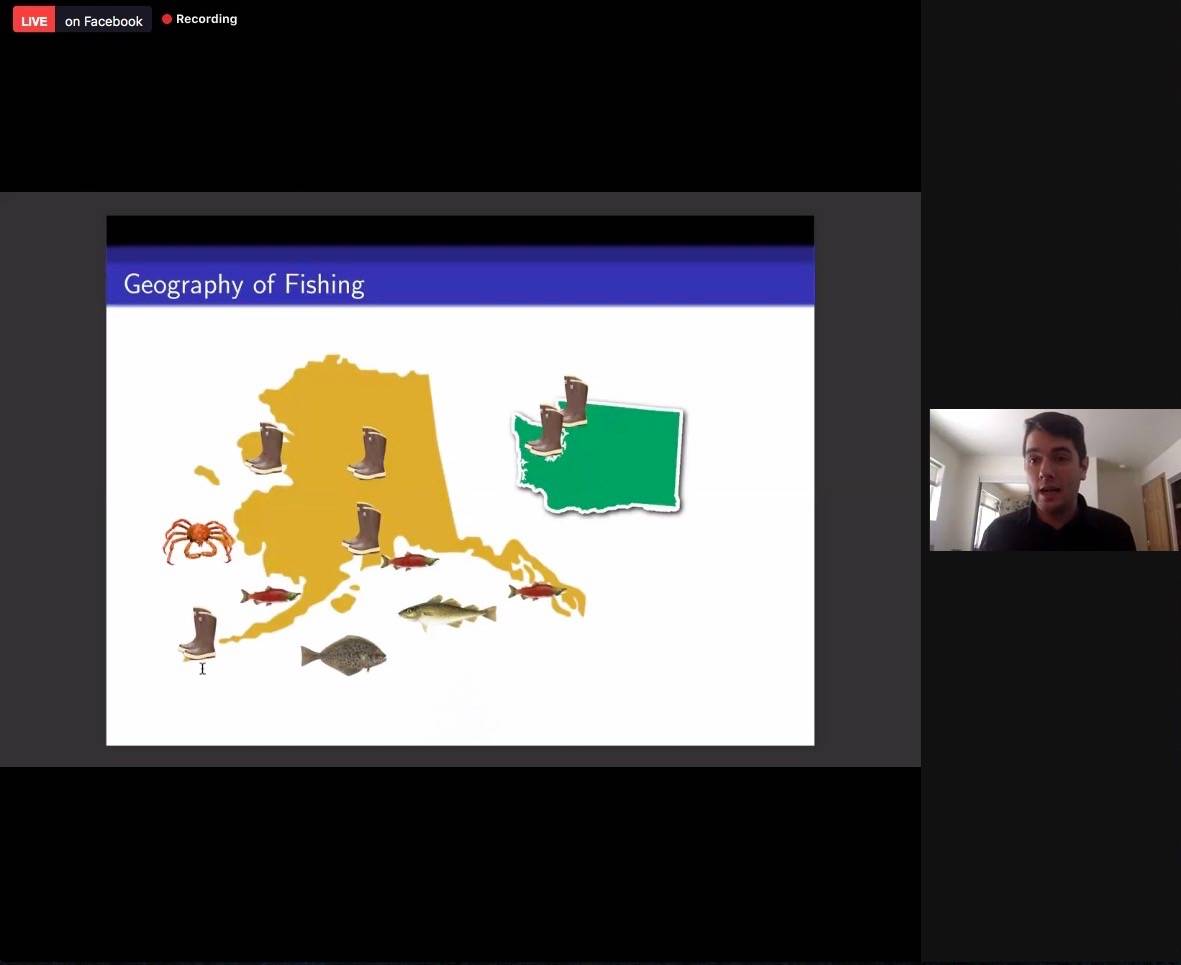The economic impacts of commercial fisheries are more often seen in the communities where fishers live, as opposed to where processors are located or where fish are landed, according to a study conducted by the University of Alaska Anchorage’s Institute of Social and Economic Research, or ISER.
The study, which was published on Feb. 1, aimed to answer the question: What are the short-run economic impacts of commercial fisheries on local economies? Using data from the Commercial Fisheries Entry Commission, the IRS and the Alaska Department of Fish and Game, the study also explored more specifically whether or not fishing activity spills over into wage and employment outcomes in other sectors, which sectors are most affected and where those benefits accrue.
Dr. Brett Watson presented the findings of the study, which was co-authored by Matthew Reimer, Mouhcine Guettabi and Alan Haynie, during an ISER webinar on Thursday.
“There’s kind of this intrinsic belief. All right, what I would characterize as an intrinsic belief that local economies are closely tied with the commercial fisheries that they participate in.”
Watson noted that many commercial fishers do not live in the cities where they fish. In addition to relocating from other parts of Alaska, many come from places in the Lower 48, such as Washington.
In Homer, for example, Watson said the study suggests that for every $1 million in revenue that fishers catch at sea, there are about 3.4 jobs for crew members generated in the communities where the fishers live. On the flip side, for every $1 million of fish landed in Homer, there are about 1.4 crew jobs created for Homer residents.
“We can see there that there’s already this difference between the impact of where fishermen live, versus where they’re landing catch on this particular outcome,” Watson said.
In contrast, the opposite is seen when they look at processing labor. For every $1 million of additional fish value landed in a community, there are about nine additional jobs in the processing sector.
“I think both of these results are fairly intuitive and consistent with conventional wisdom here,” Watson said. “Based on the anecdotal evidence that I hear, fishermen like to hire crew that they know — sometimes their family members, friends, maybe neighbors — and so maybe it’s not surprising that those crew jobs are coming mostly from where the fishermen are living.”
But are the processing jobs going to Alaska residents or out-of-state workers? Watson said there is “basically no effect” on Alaska residents when additional catch is harvested or landed in a community. Most additional processing jobs created when new catches land go to nonresident workers, he said.
The study also found that for every $1 million of catch that’s harvested by fishers in a community, employment in the fisher’s home community increases by about seven jobs. Additionally, there is an increase of about two jobs in a port community for every $1 million of harvest landed.
“That suggests there are potentially these spillover effects from commercial harvesting activity or from commercial fishing activity,” Watson said.
That, Watson said, can be seen in the money commercial fishers spend in their local economies when they return home, which has the potential to generate jobs in the non-traded sector. Traded sector jobs, in Alaska, mainly refer to jobs in oil and gas, but also mining, commercial fishing, timber harvesting and some agricultural work. Non-traded sector jobs generally refer to everything else.
“We estimate that for every dollar of revenue that fishermen bring home, there’s about $1.50 in income that’s reported to the IRS,” Watson said. “That includes that $1 of income that the fisherman is earning, and so for every dollar of revenue, there’s about 50 cents of spillover income that’s being generated by that harvest activity where the fisherman live.”
In response to the specific questions outlined by the study, Watson said their findings suggest that: fishing activity spills over into wage and employment outcomes in other sectors, that the sectors most affected are non-traded sectors in the fishers’ home communities and that most of the benefits also accrue where fishers live.
“Spillover effects seem to be much larger in the places where the fishermen reside, rather than where the activity itself is taking place,” Watson said.
The full study can be found at iseralaska.org.
Reach reporter Ashlyn O’Hara at ashlyn.ohara@peninsulaclarion.com.

